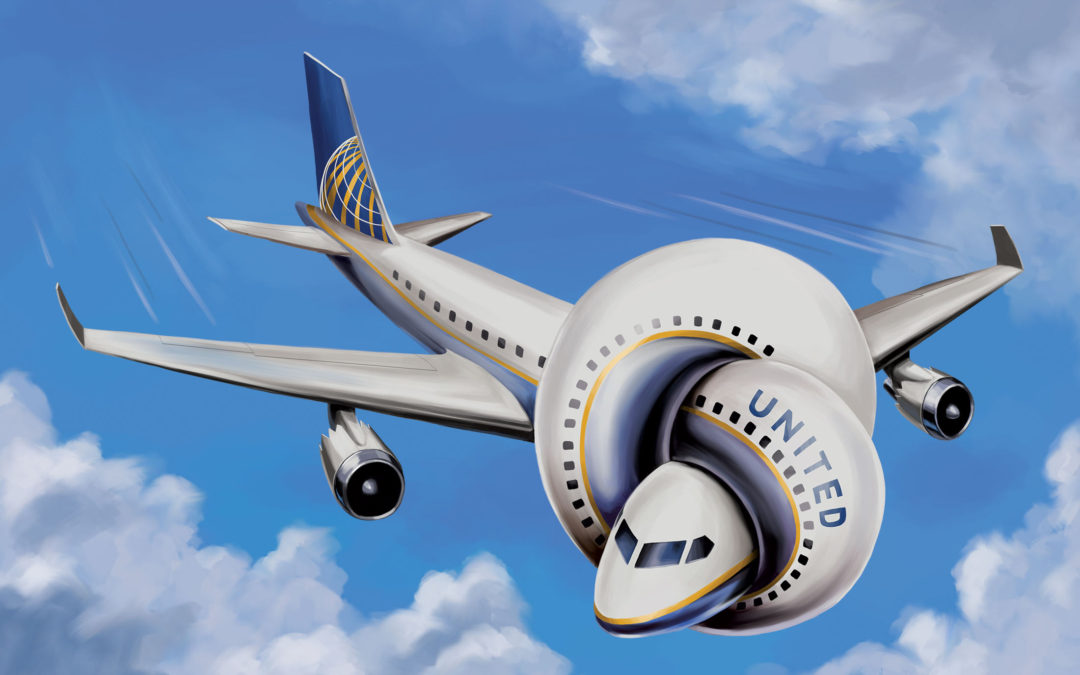United Airlines did a lot of things wrong this week, and heir approach to social media was just one of them. In spot of recent actions, 2017 started off pretty well for them. Eighty percent of their flights were on time last year – and that was continuing this year (I never experience that with United). The Points Guy, a travel website and blog, recently ranked United Airlines the second best domestic airline in February 2017. But how did social media hurt United Airlines?
Social media is always social, and brands should use it to communicate with customers and clients. I spoke with a utility company once who said they were not going to use social media because they felt if they did people would start talking about them. Truth moment: people are already talking about brands. Join the conversation! Social media hurt United airlines, but your brand can learn from their mistakes. Here are five things you should do:
Jimmy Kimmel United Commercial is Hilarious
- Don’t Hide – In 2008 musician David Carroll accused United Airlines (see a trend?) of damaging his guitar while in their custody. He negotiated with the airline for 9 months before deciding to release a series of songs and videos to YouTube. The content went viral garnering 5 million views in a few weeks. When customers compliment or complain, respond to them. Why? Seventy-two percent of people who complain on social media expect a response in 1 hour. Don’t hide!
- Have a Plan – True crisis management starts before the crisis begins. This is especially true with social media. Effective social media policies and strategies map out plans for posting new content and what to do if that content stirs up negative emotions. Twitter and Instagram posts look like they are random acts drawn up in the moment. Experienced managers make it look easy and in the moment. Marketing, management, public relations and human resources should have buy in on how to recover when social media goes awry.
- Don’t be Defensive – Defense wins championships; it does not win customers. Although leadership may not want to come off as “soft” or bending to the will of everyone, they should not blame passengers or say there is nothing else to do. Former American Airlines CEO Bob Crandall stated the United CEO did all he could do. Take accountability for actions taken online and let the public know what is happening. Aggressive videos or statements go viral and spread faster than positive ones.
- Be Public – Large corporations have large bureaucracies. We know that. However, when dealing with public relations nightmares, be public. Telling people we are “looking into it”, is only going to add fuel to the fire. Offer daily updates via Twitter, YouTube or Facebook. United’s mistake was they didn’t explain what led to this horrific video. The spokesperson for the company needs to to let people know what is happening. Social media is a powerful tool in the hands of businesses and brands who know how to communicate with customers.
Snapchat is the New King of Social Media
- Don’t Be a Robot – Efficiency is critical for lowering costs, marketing and sales. However, when responding to social media snipers, comments or criticism, be personal. Do not use automated responses. Be human and specific to the situation. Let your audience and customers know you are reacting to them. United can’t respond to each person’s comments, but they can form a positive dialogue with the passenger community.
Dozens of the passengers on the United Airlines flight pulled out their phones and began recording and uploading the videos to social media. That is the world we live in. Businesses MUST learn how to proactively plan for crisis management and connect with customers online. The future of their brand depends on it.
Scientifically Speaking, of course…




